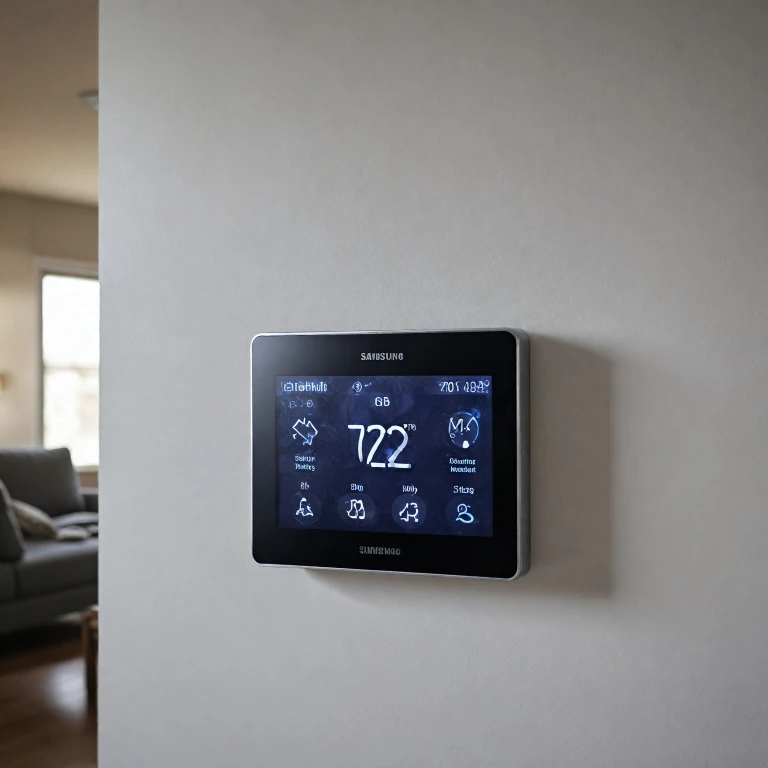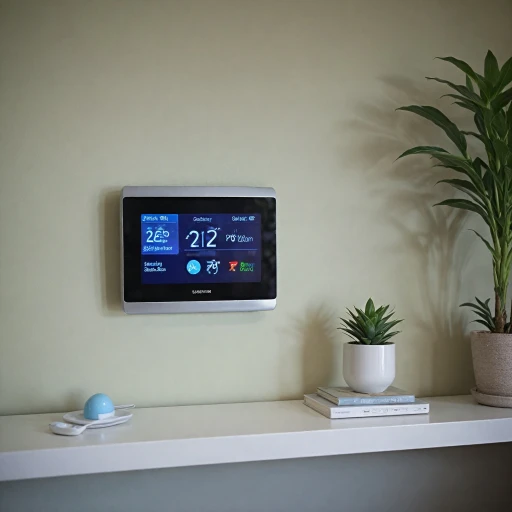What is an Ecobee API Key?
Decoding the Role of the Ecobee API Key
In the evolving landscape of smart home technology, the Ecobee API Key emerges as a pivotal element, especially when it comes to integrating your Ecobee thermostat into a broader smart home ecosystem. Essentially, an API key is a unique string of code that acts as a digital passport, allowing your thermostat to communicate securely with other devices and services.
By using an API key, users can access and control various features of their Ecobee thermostats remotely. This includes adjusting the temperature, changing the HVAC mode, or even switching between different climate presets. The API key ensures that these operations are performed smoothly and securely, safeguarding your thermostat account from unauthorized access.
Moreover, the Ecobee API Key is crucial for developers and tech-savvy users who wish to customize their smart home setups. It enables them to create personalized integrations and automations, enhancing the overall functionality of their smart thermostats. This is particularly beneficial for those who want to optimize their home's energy efficiency by setting precise set points and schedules.
For a deeper understanding of how the Ecobee API Key interacts with your thermostat's settings, you might find this resource on calibrating heat and cool helpful. It delves into the nuances of thermostat calibration and how API keys play a role in maintaining optimal climate conditions.
As you explore further, you'll discover how the API key not only enhances smart home integration but also plays a vital role in securing your devices and troubleshooting potential issues. Understanding its importance can significantly impact how you manage your home's climate and energy use.
How the Ecobee API Key Enhances Smart Home Integration
Enhancing Seamless Integration in Smart Homes
Smart home systems have evolved significantly, and the Ecobee API key stands as a crucial component in bridging smart devices within this ecosystem. By employing this key, users can achieve a seamless integration of their Ecobee thermostats with other smart home gadgets. But how exactly does this work? Firstly, the Ecobee API allows third-party applications and services to communicate with the thermostat, facilitating a harmonious interaction. When you connect your thermostat account through the API, you enable data exchange between different smart devices and platforms. This integration can simplify the control of the HVAC system modes, including heat and cool, based on your current climate settings. Moreover, with the API key in place, you can customize various settings such as temperature and fan mode, giving you greater control over your home's climate. For example, altering the temperature set point according to your schedule becomes effortless, leading to improved energy efficiency. This interconnection allows for automated mode switches, like HVAC mode and climate preset adaptations, depending on specific triggers or parameters set through your Ecobee account. The API key not only enhances integration but also allows for personalized climate management. By leveraging this integration, homeowners can implement dynamic heating and cooling settings that align closely with their lifestyle and preferences. This ensures that the home environment is comfortable while conserving energy. In essence, the Ecobee API key doesn't just connect devices—it enhances the overall functionality and intelligence of your smart home system, extending its capabilities beyond what a traditional thermostat could offer.Securing Your Ecobee API Key
Safeguarding Your API Key for Optimal Thermostat Performance
Maintaining control and security over your Ecobee API key is crucial for the efficient functioning of your thermostat. With the API key acting as a gateway to the smart capabilities of your device, ensuring its protection will help maintain seamless integration with various smart home systems. To begin, always ensure that your Ecobee account settings are up-to-date. Regularly updating passwords and monitoring account activity can prevent unauthorized access. This step is vital since any breach could potentially disrupt the operation of your heating, ventilation, and air conditioning (HVAC) systems or alter the temperature settings. Next, when dealing with the API key, never share it openly. Store it securely, perhaps within a password manager, where it remains inaccessible to those outside your trusted circle. Such precautions will prevent hackers from changing your HVAC mode, switching climate presets, or adjusting the current climate settings without your permission. As you maximize energy efficiency within the smart home ecosystem, remember the role that a secure API key plays. By ensuring the authenticity and integrity of your access token and refresh token, you empower your device to manage energy consumption accurately and maintain ideal set points. Meanwhile, configuring the fan mode and HVAC mode through proper authentication adds another layer of control over your internal climate. Finally, keep an eye on your device's performance and any error codes or notifications that may suggest an issue with the API key settings. Even issues reported as "successful false" can be an indicator of unauthorized attempts to alter API preferences. In the evolving landscape of smart thermostat development, staying informed about API key management offers peace of mind and guarantees that your Ecobee thermostat operates at its peak performance levels. For more insights on thermostat performance and settings, explore associated thermostat features.Troubleshooting Common Ecobee API Key Issues
Troubleshooting Common Issues with Ecobee API Keys
Encountering challenges with your ecobee thermostat's API key can be frustrating, but understanding some basic troubleshooting steps can ease the process and restore functionality quickly.- Verify API Key Validity: The first step is to ensure that your API key is valid and has been entered correctly in your thermostat account settings. A misspelled key can lead to a "successful false" error, preventing your API from functioning correctly. Always double-check the string to confirm its accuracy.
- Check the Access Token: If your ecobee device isn't communicating with other smart home systems, the issue might not be the API key itself but an expired or invalid access token. The Ecobee API uses tokens to authenticate and authorize access. Ensure that your token is current and hasn't exceeded its "min time" for validity. If expired, you'll need to initiate a token refresh.
- Analyze Mode Settings: If changes in HVAC settings or climate presets are not reflecting as expected, verify if the thermostat's mode, such as heat cool or fan mode, is set correctly. Also, ensure that the ecobee thermostat settings match the desired "set point" temperature for each mode.
- Network Connection: Sometimes the problem isn't with the API but the internet connection. Ensure your ecobee thermostat is connected to a stable network. A weak signal or disrupted connection can interfere with the proper functioning of the API key.
- Examine the Device Type: Confirm that the thermostat type is compatible with the API key. Not all devices support full API integration, so confirming the device compatibility with your ecobee account is essential.



